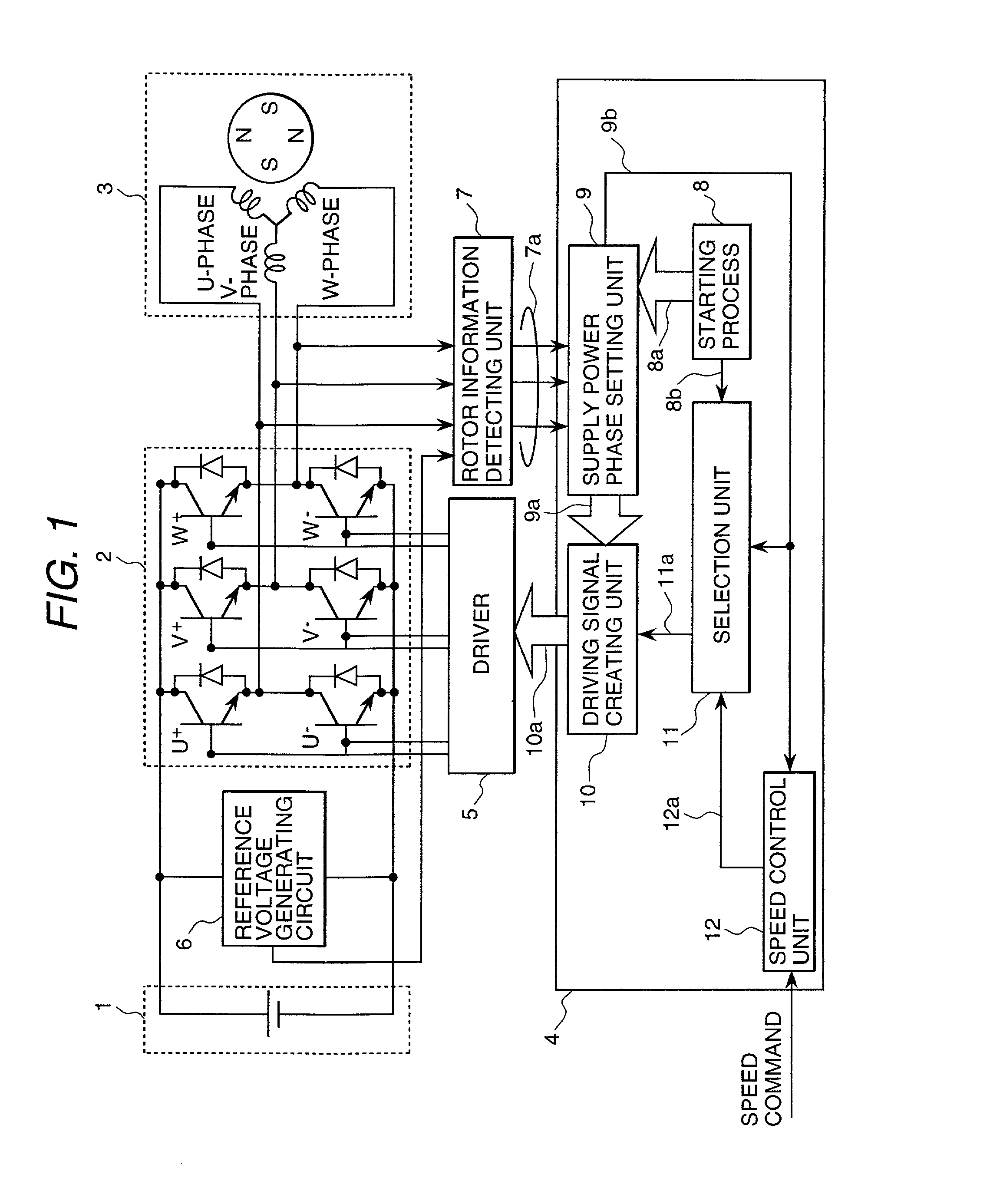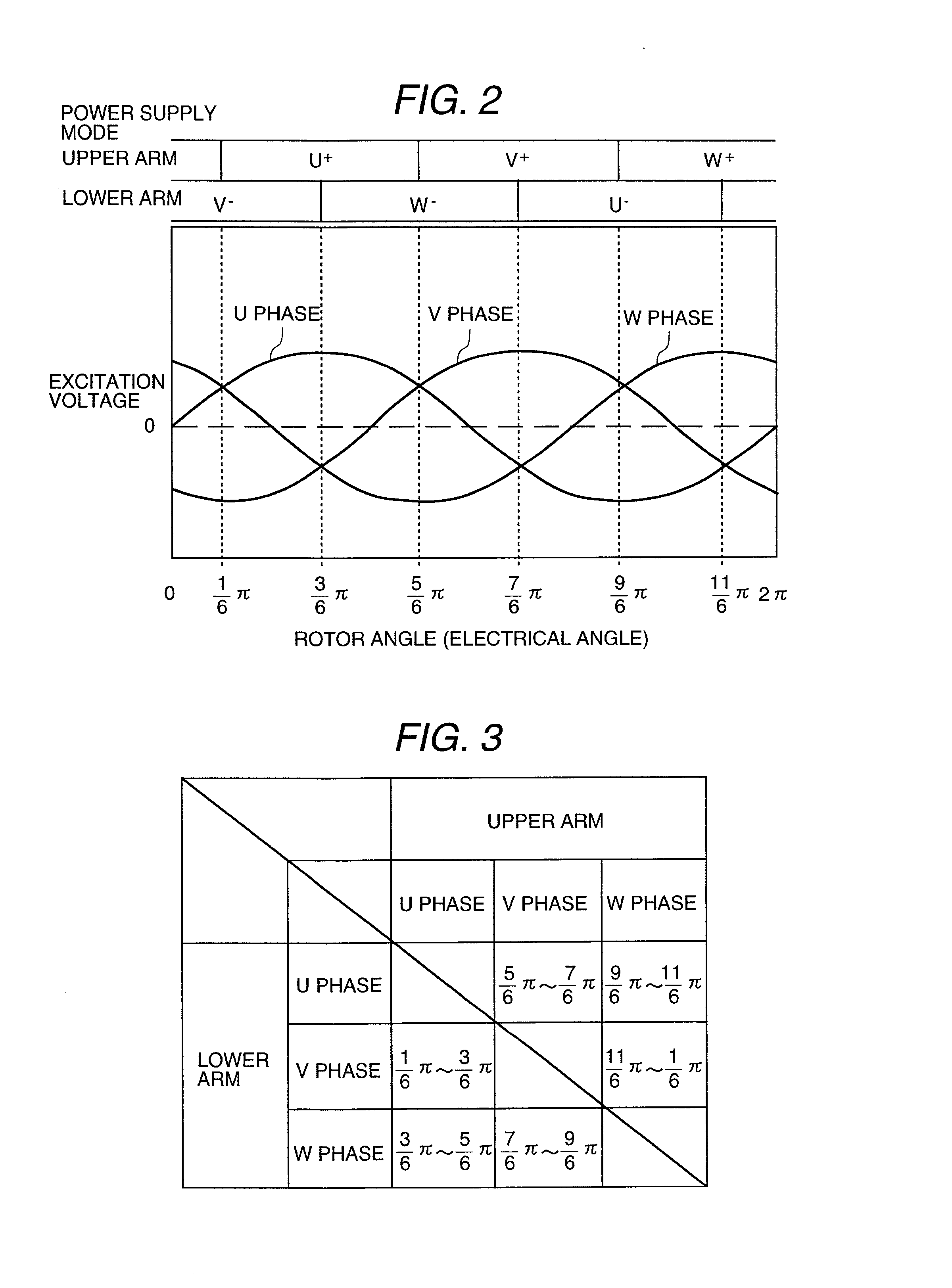Starting control method of and control apparatus for synchronous motor, and air conditioner, refrigerator, washing machine and vacuum cleaner each provided with the control apparatus
a technology of synchronous motors and control apparatuses, which is applied in the direction of electronic commutators, motor/generator/converter stoppers, dynamo-electric converter control, etc., can solve the problem of increasing the current of the motor too significantly, not being able to detect the magnetic pole position of the rotor with the corresponding method, and not being able to start the motor
- Summary
- Abstract
- Description
- Claims
- Application Information
AI Technical Summary
Benefits of technology
Problems solved by technology
Method used
Image
Examples
Embodiment Construction
[0037] Embodiments of the brushless DC motor control apparatus pertaining to the present invention, and of electrical appliances using brushless DC motors driven by the corresponding control apparatus, are described below, referring to FIGS. 1 to 11.
[0038] FIG. 1 is a block diagram showing an embodiment of the brushless DC motor control apparatus pertaining to the present invention. This brushless DC motor control apparatus has an inverter circuit 2 which rotates a synchronous motor 3 by converting the voltage of a DC power supply 1 into an AC voltage of any pulse width and supplying the AC voltage to the stator coils of the above-mentioned synchronous motor 3, a control circuit (one-chip microcomputer or hybrid IC) 4 which controls synchronous motor 3 according to speed command signal, a driver 5 which drives the aforementioned inverter circuit 2 in accordance with the above-mentioned control circuit 4, and a rotor information detection unit 7 which compares the terminal voltage of...
PUM
 Login to View More
Login to View More Abstract
Description
Claims
Application Information
 Login to View More
Login to View More - R&D
- Intellectual Property
- Life Sciences
- Materials
- Tech Scout
- Unparalleled Data Quality
- Higher Quality Content
- 60% Fewer Hallucinations
Browse by: Latest US Patents, China's latest patents, Technical Efficacy Thesaurus, Application Domain, Technology Topic, Popular Technical Reports.
© 2025 PatSnap. All rights reserved.Legal|Privacy policy|Modern Slavery Act Transparency Statement|Sitemap|About US| Contact US: help@patsnap.com



